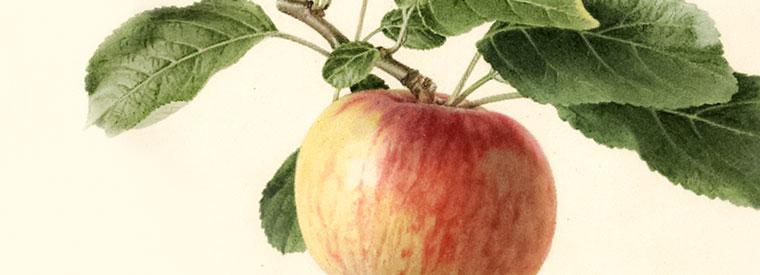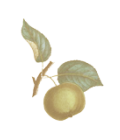From the founding of Jamestown to the time of Washington and Jefferson, every plantation owner made cider, drank cider, and bragged about his cider.

Fruit
BUCKINGHAM is also called Queen, Kentucky Fall Queen, Equinetely, Ne Plus Ultra, Bachelor, Byer's, Byer's Red, Frankfort Queen, Henshaw, Red Horse, Lexington Queen, Merit and Blackburn. It was mentioned by the pomologist, Coxe, in 1817. The root suckers were often transplanted to establish orchards and were distributed widely. Its origin is often attributed to Louisa County, Virginia, and it was one of the most popular dessert apple varieties in the southern states in the 19th century. Because of its low chill requirement, it could be planted in the warmer areas of the south. This large apple is pale-yellow, flushed and mottled, with red stripes, and blushed a bright carmine. The surface is covered with white dots. Its shape is oblate and somewhat irregular. The skin is thick and tough, and the flesh juicy, yellow, crisp with a sprightly subacid. It has a small core and a short stalk. The tree is a moderate twiggy grower that bears full crops annually. It is slightly subject to fireblight, but has no major disease problems. It ripens in September in Central Virginia, but south of the state, ripening begins in August.
Ripening Period
- Early Fall - September


